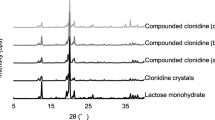Abstract
Combinations of opioids and adjuvant drug solutions are often used in clinical practice while little information is available on their microbiological or chemical stability. Currently there are no commercially available, prepacked, ready‐to‐use epidural or subcutaneous mixtures. Thus, epidural and subcutaneous analgesic mixtures must be prepared in the pharmacy on an as‐needed basis. Such mixtures are typically used for the treatment of severe pain in cancer patients. The aim of this study was to investigate the microbiological and chemical stability of a buprenorphine, haloperidol and glycopyrrolate mixture in a 0.9% sodium chloride solution. A high performance liquid chromatographic (HPLC) method and pH‐meter were used to conduct the analyses. Antimicrobial activity of each component was studied by an agar dilution method. According to the results from the chemical and microbiological stability studies, this mixture can be stored in polypropylene (PP) syringes and polyvinyl chloride (PVC) medication cassettes for at least 30 days at either 21 °C or 4 °C, and for 16 days in PP syringes at 36 °C, and for 9 days in PVC medication cassettes at 36 °C.
Similar content being viewed by others
References
Levy MH. Pharmacologic treatment of cancer pain. New Engl J Med 1996;335:1124-32
World Health Organisation. Cancer pain relief. Geneva: World Health Organisation, 1986
Practice guidelines for cancer pain management. A report by the American Society of Anaesthesiologists Task Force on pain management, cancer pain sedation. Anaesthesiology 1996;84(5):1243-57
Kalso E, Heiskanen T, Ranto M, Rosenberg PH, Vainio A. Epidural and subcutaneous morphine in the management of cancer pain; a double-blind cross-over study. Clin J Pain 1996;67:443-9
Rawal N. Spinal Antinociception:clinical aspects. Ann Medicine 1995;27:263-8
H, Dahl JB. The value of multimodal or balanced analgesia in postoperative pain treatment. anesth analg 1993;77:1048-56
Littrell RA. Epidural analgesia. Am J Hosp Pharm 1991;48:2460-74
European Pharmacopoeia, 2nd Ed V.2.1.1.1-10. Council of Europe, Maisonneuve S.A., Sainte-Ruffine, France
Zaidi S, Healy S. A comparison of the antibacterial properties of six local analgesic agents. Anaesthesia 1977;32:69-70
Jäppinen A, Kokki H, Naaranlahti TJ, Martinsen A, Turunen M, Kontra K, et al. Chemical stability of a mixture of fentanyl citrate, bupivacaine hydrochloride and clonidine hydrochloride in 0.9% sodium chloride injection stored in syringes and medication cassettes. Pharmacy World & Science 1996;Suppl A 11:111-21
Rights and permissions
About this article
Cite this article
Jäppinen, A., Kokki, H., Naaranlahti, T.J. et al. Stability of buprenorphine, haloperidol and glycopyrrolate mixture in a 0.9 % sodium chloride solution. Pharm World Sci 21, 272–274 (1999). https://doi.org/10.1023/A:1008771621812
Issue Date:
DOI: https://doi.org/10.1023/A:1008771621812




